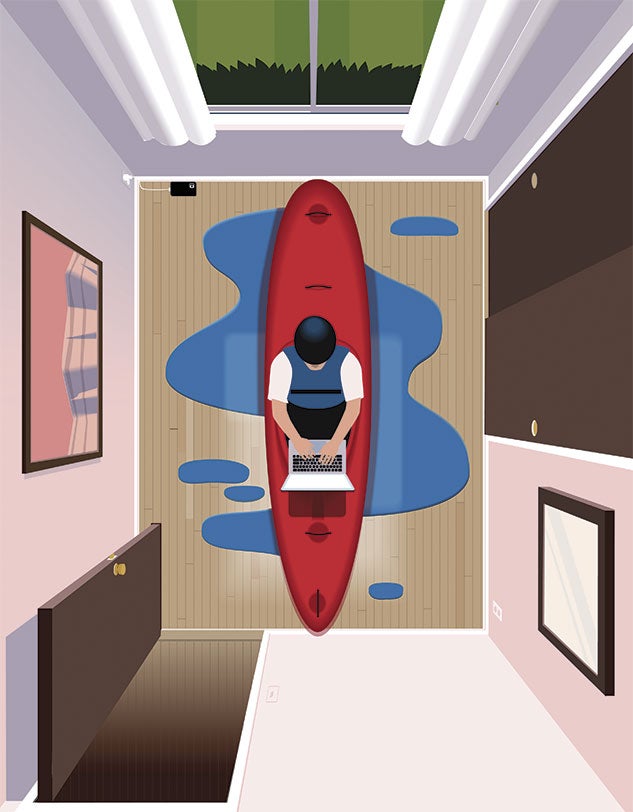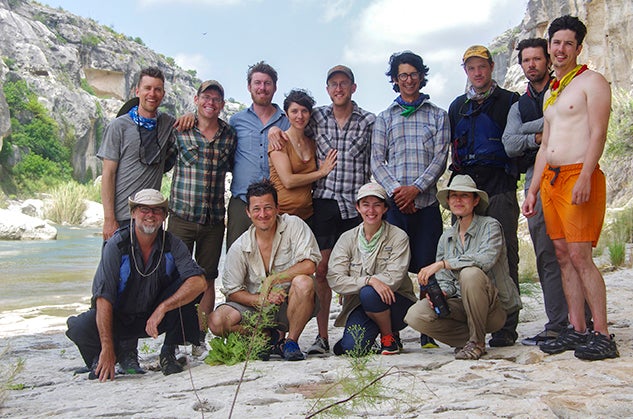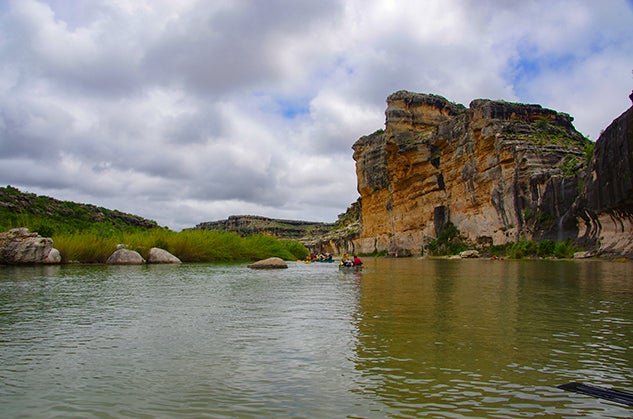Notes from Inside
Hunkered down and busier than ever covering the pandemic, I’m missing my annual West Texas river adventure with friends.

As I write this in Montana with April tipping into May, I should be packing.
One awkwardly large cardboard box is usually sufficient to mail the gear I’d rather not have to borrow after I deplane in Austin, where most years I meet a rabble of friends and drive to West Texas for a week of canoeing down a desert river.
One year, we hit especially low water and essentially walked, dragging overly loaded boats, down the Devils River. Twice we’ve run the lower canyons of the Rio Grande. And twice we’ve paddled the Pecos River.
The Pecos, especially, has always been an adventure, which is to say I’ve never been very far from afraid on that river. We go in the springtime because that’s when there’s the best chance of enough water in the skinny river to avoid repeating our Devils debacle. But that’s also the time of year when it’s most likely that thunderstorms passing over the expansive hardpack watershed of the Pecos will generate the flash floods that regularly scour those canyons, leaving unlucky paddlers to hike out through miles of remote desert, waving goodbye to anything — boats, tents, ice chests full of food and beer — they couldn’t drag out of the channel in time.
Three years ago on the Pecos, I was as scared as I’ve ever been on a river. We camped in heavy rain most nights. While the lightning displays on the panoramic evening horizon were gorgeous, they suggested downpours in every direction, and we did not want more water in the river. There are few places to camp along the Pecos that aren’t side canyons, and even aside from the acutely electrical night we spent crouched in lightning position inside our wind-blasted tents, I’m pretty sure I’m not the only one whose sleep was disturbed by dreams of being flushed out of one of those narrow limestone slots by a wall of dirty water.
Last year, I was scared before I even got there. The televisions in the Missoula airport were tuned to Weather Channel reports of storm systems squatting over West Texas. My flight to Austin was diverted to San Antonio by thunderstorms. Austin was flooding when I finally got there. Our week on the river, it turned out, was dry — not counting my frequently flipped canoe and a good portion of the tortillas therein — and uneventful. But the awareness of danger was ever present.
In Montana, it’s frequently noted that just knowing you share a landscape with grizzly bears puts the senses on high alert. That’s how I feel on the Pecos, even under sunny skies.
But not this year.
In mid-March, when my far-flung canoe crew is usually busy sharing Google Docs of camp-cook ingredients for a giant pre-paddle grocery run, Montana announced its first four confirmed cases of COVID-19. Since last year’s Pecos trip, I had moved from Missoula to Helena, the state capital, and started work as editor of Montana Free Press, a nonprofit news startup. I was their third employee, alongside the founder/director and one reporter. We were busy from the start trying to build an organization from next to nothing, coordinating a 16-paper statewide reporting collaboration and publishing three to four stories and a podcast every week, even as I learned the new ropes.
Then COVID-19 hit us like a wall of dirty water. During the seven days after the announcement of Montana’s first cases, we published 17 stories and we have been averaging about 12 a week since then, a 300% overnight increase in editorial output. We weren’t doing that with one reporter, of course. Suddenly I was marshaling freelance journalists in Missoula, Kalispell, Bozeman, Lewistown, Billings, Butte and Great Falls to cover the pandemic’s impacts on hospitals, health departments, national parks, Airbnbs and agriculture.

Our little downtown office had been closed since early March after our reporter returned from a conference in New Orleans where a presenter had subsequently tested positive, and it was only a few days after we’d started working from home that a new staffer, a development director, joined our remote ranks. In February, we’d hired a second reporter who’d been working in New York City, and we nervously tracked her cross-country car-camping escape from that COVID-19 hot spot into a state-mandated 14-day self-quarantine in Helena. That hire had been planned, but an unanticipated third reporter fell into our lap in early April when a Report for America corps member who’d been furloughed from his paper in Wyoming was reassigned to us.
Suddenly we have a real newsroom, even if we only see each other every morning on Zoom. I sit at home all day on the receiving end of a fire hose of copy and our governor’s stay-at-home order, which began a phased expiration April 27. The outdoor adventures that I originally moved to Montana for in 2002 in a pickup with two canoes and a kayak strapped on top seem as distant as our Pecos put-in near Pandale, Texas, 1,500 miles from here. I can hardly remember the last time I was outside — bimonthly grocery runs don’t count — other than walking my dog six blocks every day to poop on the only recently snow-free Capitol lawn. (And yes, I pick up after him. Mine is a civilized hermitage.)
I got a federal stimulus check last week, and I’ve already spent half of it — about what it would normally cost to fly and mail a big cardboard box from Montana to Texas and back — on Hail Mary ergonomic aids for my suddenly full-time home office and creaking lower back. Sitting in a canoe for seven days, never mind the associated gear hauling and boat dragging and ground sleeping, can do its own number on a person’s spinal infrastructure. But those days end with a constellation of equally tired friends, communal meals, campfires under lightning storms and shared stories of engagement with the elements.

Helping build a startup publication during the public health story of — let us hope — a lifetime is its own adventure with its own adrenaline, and I fall into bed these days as worn out as I’ve ever been after a long day’s push downstream. But on the Pecos, we always know where the river — or at least our time on it — will end. And when it does, there’s a grimy group photo, a mad multihour dash to the nearest purveyor of Mexican food and, eventually, back in Austin, a hot, cleansing, restorative shower. It’s hard to know when or how this present assault on normalcy might end. I can only hope there’s a scalding plate of enchiladas on the other side.
A pandemic, like a grizzly, can set the senses buzzing. But I can’t wait for my next chance to fear a flash flood with friends instead.
Brad Tyer is the editor of Montana Free Press (montanafreepress.org) and has worked as a reporter and editor at the Houston Press, the Missoula Independent and the Texas Observer. He’s the author of “Opportunity, Montana: Big Copper, Bad Water, and the Burial of an American Landscape” (Beacon Press, 2013). He was born in Bryan and raised in Houston.
